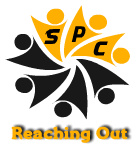Preventable Deaths
As a psychologist, suicide is part of what we deal with in managing mental health. What I quickly realized is that I was under-trained for how to really understand the angst experienced by my patients and how to prevent a suicide using a “best practice” model. Best Practices for suicide prevention didn’t exist when I started my career—and still don’t in many offices around the country. We are in the infancy of understanding how to keep people safe. We have come a long way, but there continues to be too many deaths each year that are preventable. The rate of suicide grows each year.
I realized I was under-trained to prevent a suicide.
Suicide is the 10th leading cause of death.
Suicide is the 10th leading cause of death for all age groups and is the 2nd leading cause of death for youth 10-14 years of age and 15-24-year-olds. We have a significant opportunity to reach our youth and try to understand what is going on. Similarly, suicide of men in the middle years is rising with a significant proportion of those deaths occurring in the workplace. This leaves employers with something to work on in regards to how to prevent and support employees that may be struggling. Seniors are the most lethal planners and have a high completion rate. In my community seniors have had one of the highest rates of suicide, so we continue to focus on improving.
People sometimes worry that suicide prevention means trying to stop someone that may be exercising their choice to die. On the contrary, there is no opposition to people making well-informed choices when they are mentally and emotionally healthy. But, what is generally the case, is people make the choice of suicide when they are on a substance, in the first few weeks following a crisis or major change that will end, in emotional turmoil (i.e., sudden change, fight, loss, other), have abruptly stopped their medication, and/or have a treatable mental health condition. All of these factors can change how a person thinks in the moment. Thus, it is important to recognize people contemplating suicide early in systems such as places of employment, in the community, in educational settings, and at home. We can do better if we are all involved. Suicide isn’t a problem for one person to fix. Each of us can learn the skills to address the presence of suicide in our communities.
We can do better if we are all involved.
Suicide prevention requires a village.
I believe strongly that it takes a village to keep everyone safe. Suicide prevention really requires that. Part of what we have learned is that Suicide Prevention is not about only professionals saving lives as only 20% of people in a crisis will show up to a mental health professional. This is about the public learning the skills, like CPR, to save a life. Learning the skills to prevent suicide means recognizing the risks and warning signs early enough so that an intervention can happen.
Suicide Prevention Coalition
We formed the Suicide Prevention Coalition of North Central Washington (SPCNCW) in response to unprecedented loss in our community. As the founder and active member of the coalition, I know that we are making an impact in our region. Each year we expand suicide prevention awareness.
In the News
Dr. Julie Rickard has been featured in various media outlets sharing expertise related to suicide prevention. Find links to articles and information for Press & Media here.






